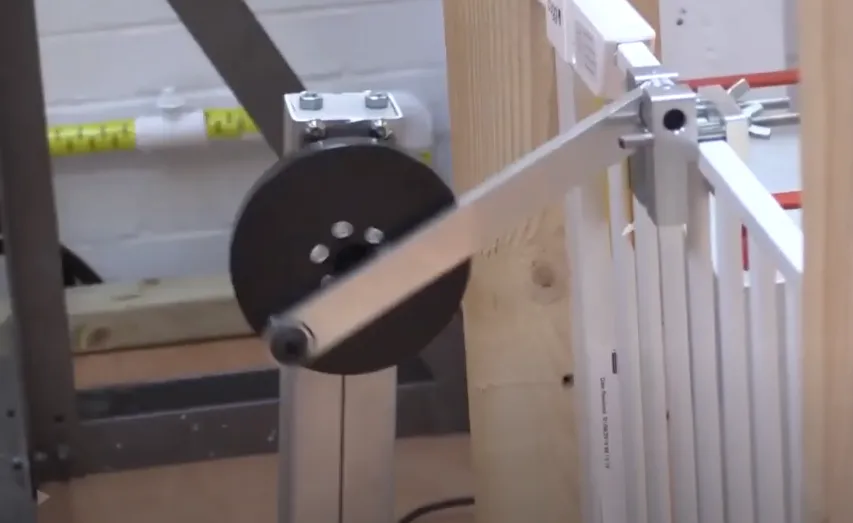BS EN 1022 Furniture Determination of Stability Applied to Children’s Chairs
The British Standard EN 1022 pertains specifically to the determination of stability applied to children's chairs. This standard ensures that furniture designed for children is safe and secure, reducing risks associated with tipping or falling over. Compliance with this standard is crucial in the manufacturing of high-quality, durable, and safe furniture meant for young users.
The test outlined in BS EN 1022 involves a series of stability tests aimed at ensuring that the chair does not tip over under certain loading conditions. These conditions are designed to simulate real-world scenarios where children might apply forces while seated or climbing on the chair. The standard covers various aspects including static load testing, dynamic impact tests, and other relevant parameters.
The static load test requires placing a specific weight (typically simulating an average child's weight) at different points of the chair to check its stability under stationary conditions. Dynamic impact tests simulate more rigorous movements that children might perform while seated, ensuring the chair can withstand these forces without tipping or collapsing.
For accurate testing, specimens are prepared according to the standard specifications, which include fixing the chair in a position where it is most prone to tipping. The test apparatus used includes calibrated loading devices and measurement systems capable of recording any movement or displacement during the tests. Once conducted, the results must meet predefined acceptance criteria set out in the standard.
Testing according to BS EN 1022 is essential for manufacturers aiming to enter markets that demand strict safety standards. It helps them avoid potential recalls and legal issues by ensuring their products comply with international norms. Additionally, it can enhance brand reputation as consumers increasingly value safety and quality in children's products.
The standard also emphasizes the importance of regular inspections and maintenance of furniture to ensure ongoing safety. This periodic review ensures that even if wear and tear occur over time, any necessary adjustments or replacements are made promptly.
Industry Applications
| Application Area | Description |
|---|---|
| Furniture Manufacturers | Ensuring compliance with international safety standards is crucial for manufacturers. This test helps them meet these requirements, thereby opening doors to global markets. |
| Retailers and Distributors | By selling products that have passed this test, retailers can ensure they are offering safe furniture to consumers. Compliance also protects their brand reputation and legal standing. |
| Schools and Childcare Facilities | The safety of children in educational settings is paramount. Ensuring the stability of chairs used by young children helps prevent accidents that could otherwise occur. |
- Furniture Manufacturers: This test ensures products are safe for use, especially when considering the dynamic movements children often make.
- Retailers and Distributors: Passing this test can help in building trust with customers and adhering to regulatory requirements.
Why Choose This Test
- Enhanced Safety: Ensuring that the chair does not tip over is critical for preventing potential accidents involving young children.
- Market Access: Compliance with international standards can open up opportunities in various markets demanding strict safety measures.
- Consumer Trust: Demonstrating adherence to safety standards reassures parents and guardians about the quality of products they purchase for their children.
The test provides a comprehensive assessment of the chair's stability under different loading conditions, ensuring it can withstand typical use by children.
It helps manufacturers identify any potential design flaws that could lead to instability and ensures these are addressed before product release.
International Acceptance and Recognition
The BS EN 1022 standard is widely recognized across Europe and internationally. Its acceptance by regulatory bodies in various countries means that products meeting this standard can be sold globally with minimal barriers. This recognition enhances market reach for manufacturers who comply, making it easier to penetrate international markets.
Many governments and organizations around the world have adopted or referenced this standard as part of their safety regulations. For instance, some countries have made compliance with BS EN 1022 mandatory in certain jurisdictions. Such widespread acceptance underscores its importance and reliability in ensuring product safety for children’s furniture.





